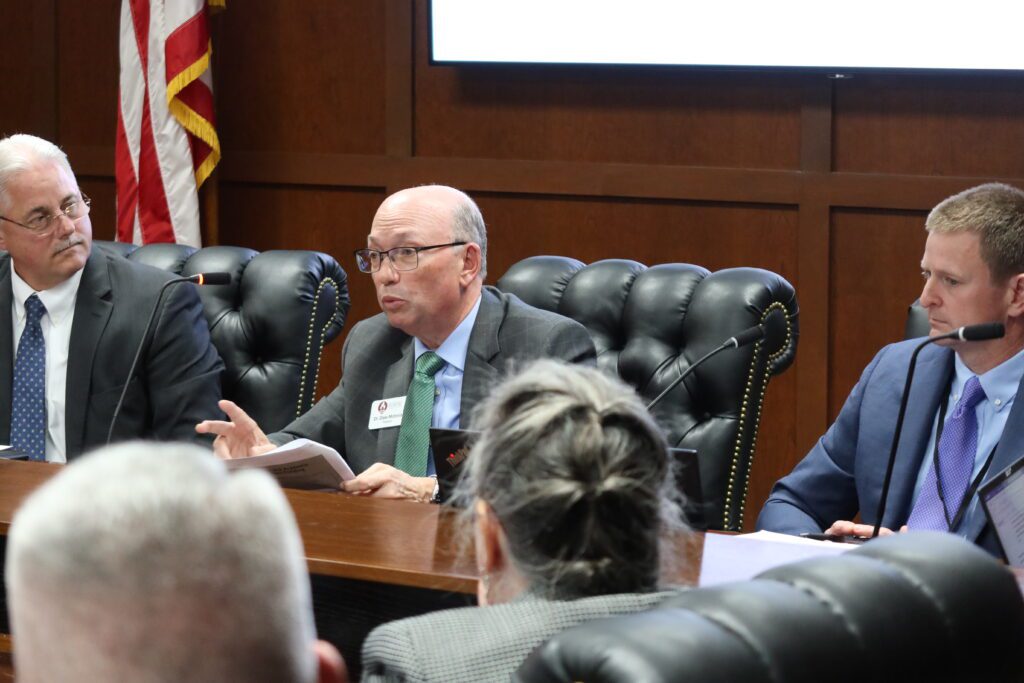The N.C. Community College System’s (NCCCS) primary legislative ask for lawmakers this long session is to fund Propel NC, its proposed funding model. The system is asking lawmakers for nearly $100 million to implement the model, which it says “prioritizes connecting students to high-demand, high-wage jobs.”
Last short session, budget proposals from both chambers included $18.5 million in funding for the first phase of Propel NC, but no compromise budget was passed before lawmakers adjourned the session. In the proposals, that funding was for “funding model workforce parity.” The mini budget passed in the short session did not include funding for Propel NC.
Two bills concerning Propel NC were filed this session, but neither bill — House Bill 490, “Propel NC Funding and Tuition Surcharge,” or House Bill 365, “Workforce Education Act” — passed one of the chambers ahead of the crossover deadline. However, because the bills allocate funding to implement the new model, the bills can still be considered or end up in the budget.
Sign up for Awake58, our newsletter on all things community college.
At last month’s State Board of Community Colleges meeting, Alex Fagg, NCCCS vice president of governmental and external relations, told the Board that the system is continuing conversations about Propel NC with the General Assembly, where he said support for Propel NC is strong.
Both the House and Senate budget proposals authorize the system to implement Propel NC in the 2025-26 school year, but with varying amounts of funding to do so.
Before we look at what each proposal includes for Propel NC, here are the main funding asks included in the system’s funding model proposal:
- $68.5 million to shift the current full-time equivalent (FTE) funding tiers to “workforce sectors,” with courses ranked and valued by statewide salary job demand data every three years. All curriculum and continuing education (CE) courses would reside in the same workforce sector. Under the current model, a nursing curriculum course is funded at a higher rate than a CE course, for example.
- $24.4 million to increase base allocation funds by approximately 5.8%, “which closes the gap to actual spending patterns and account for inflation,” per a 2024 NCCCS document.
- $6 million in nonrecurring funds for an enrollment increase reserve to give a fixed per-FTE amount for any colleges that go over the enrollment threshold set by their FTE for the fiscal year. The system would then like to build replenishment of the fund into the recurring enrollment growth fund in the state budget.
Finally, Propel NC also includes a request that excess tuition receipts are returned to the college that generated them on years in which the system as a whole generates excess receipts. Currently, excess receipts fund the enrollment increase reserve.
“The North Carolina Community College System’s budget priorities focus on modernizing and stabilizing funding for North Carolina’s community colleges to better align with workforce demands, economic growth, and operational needs,” the NCCCS legislative agenda says.
Propel NC was first unveiled in January 2024, following months of work to revise the system’s funding model, which was created in 2010 and last updated in 2013.
The vast majority of funding for the state’s 58 community colleges comes from state appropriations, with $1.5 billion allocated each year of this biennium.
The system’s current funding model allocates resources to the colleges in proportion to the number of FTE students they enroll in each of their programs. Certain courses receive more state funds than others based on a four-tier funding model.
As mentioned above, under Propel NC, funding based on FTE would remain in place, but the current FTE tiers would shift to “workforce sectors” instead.
You can view more details about Propel NC, including projections for the proposed workforce sectors, here. You can read more about how community colleges are currently funded in this EdExplainer.
Read more about Propel NC
What did the governor propose for Propel NC?
Each year, the budget process in North Carolina typically kicks off with a proposal from the governor. This year, Gov. Josh Stein released his first budget proposal in March, calling for an additional $876 million in education funding for the first year of the biennium and $1.2 billion in the second, according to the budget document.
For community colleges, Stein’s proposal included about $40.3 million in each year of the biennium to implement Propel NC — the most funding allocated out of any of the budget proposals. That amount included about $34.2 million each year to offer course parity by shifting curriculum and CE classes to the same workforce sectors.
It also included $6 million each year to establish an enrollment increase reserve, which is part of Propel NC’s request.
“This effort enhances workforce development programs at North Carolina’s Community Colleges for in-demand, high-wage workforce sectors, aligning the programs to business needs and bringing valuable career development opportunities to rural communities,” Stein said.
Stein’s proposal did not include funds to increase base allocation funds for colleges.
What’s in the Senate budget?
Every year, the House and Senate take turns on which chamber releases its budget proposal first. The Senate released its proposal first this year, announcing its budget in mid-April.
Among other things, the Senate allocated approximately $73 million over the biennium for “workforce sector tier reorganization.” The anticipated cost of that component of the model is approximately $68.5 million, according to the system.
“We’ve seen community colleges across our state become integral partners in supporting business growth and development, and we really want to continue building on those efforts and support high demand industries and fields,” Sen. Michael Lee, R-New Hanover, said. “This budget will appropriate $36.5 million (each year) to increase funding for pathways related to health care, engineering, advanced manufacturing, trades and transportation, and information technology at community colleges, through the Propel NC initiative.”
The Senate’s budget did not include funding for Propel NC’s other three components: $24.4 million to increase base funding to account for inflation, $6 million in nonrecurring funds to establish an enrollment increase reserve, and for colleges to keep their excess tuition receipts on years when the system as a whole has excess receipts.

What’s in the House budget?
The House budget, which was released last month, did not allocate specific funding for implementing Propel NC.
However, the House proposal included $6 million for an enrollment increase reserve, which was not included in the Senate budget.
Regarding implementation of Propel NC, the budget’s bill text gives the State Board of Community Colleges permission to revise its funding formula and allocate funds under that revised formula beginning in the 2025-26 fiscal year.
It says the board “may increase tuition rates to accommodate any revisions to the funding formula.”
“The House authorized us to make the shift for Propel NC for the funding model, but allows us, the State Board, to consider tuition increases to fund that,” Fagg said at the Board’s last meeting. “So a little bit different (than the Senate proposal), but the hierarchy of support for Propel NC is on the forefront.”
What’s next?
Now that both chambers have released their proposals, lawmakers must work together to pass a compromise budget. This year, the Republican-led General Assembly has a supermajority in the Senate and is one vote shy of a supermajority in the House. While Republicans may have to work across the aisle to override governor vetoes, the Republican majority means that Republican leaders will drive the two-year budget process.
During the long session, the General Assembly is supposed to pass a new budget for the biennium by July 1, when the new fiscal year starts. However, this year, delays in the negotiation process are expected as the chambers discuss disagreements about items including pay raises, personal income taxes, and more.
Since fall 2024, the NCCCS has been working to align its policies, codes, and guidance to account for Propel NC if funding is approved.
“We want colleges to be ready to rock and roll,” Fagg said at the time. “Because they’re the ones that ultimately are going to be dealing with bringing the students in and carrying out the change of funding model.”
However, if a budget is passed too late into the start of the fiscal year, it is possible the implementation of the new funding model will also be delayed. Because state funding makes up the bulk of each college’s budget, it could be challenging to change those budgets once the school year is underway.





